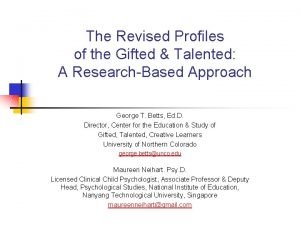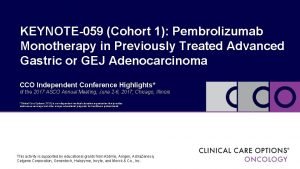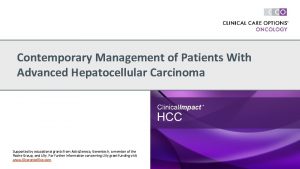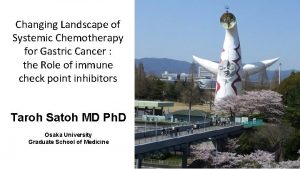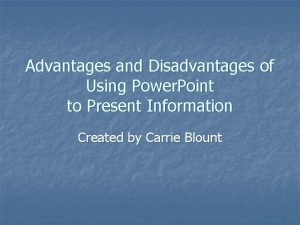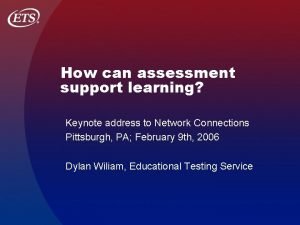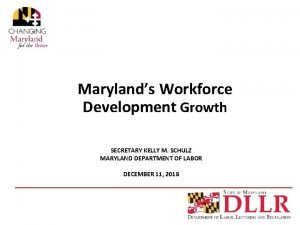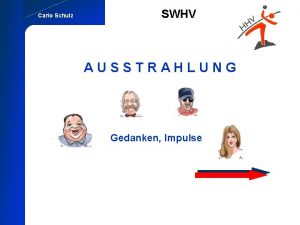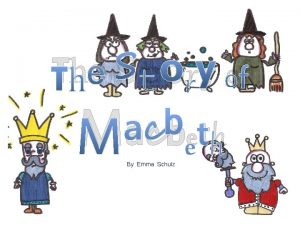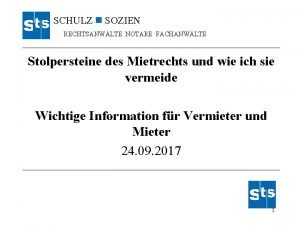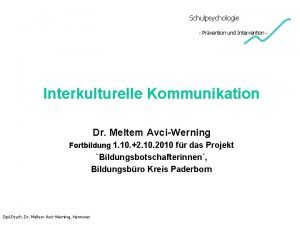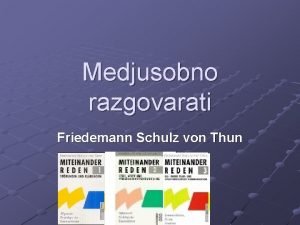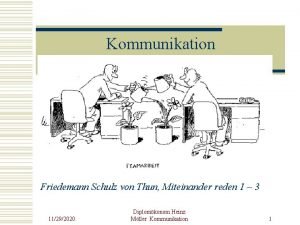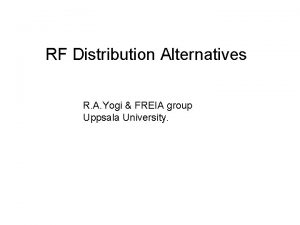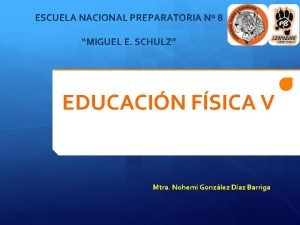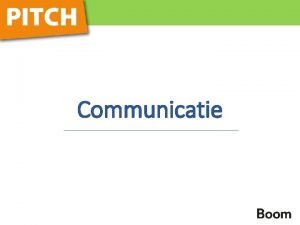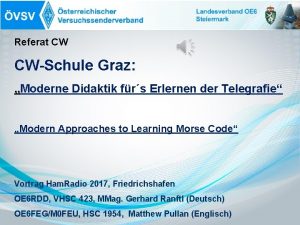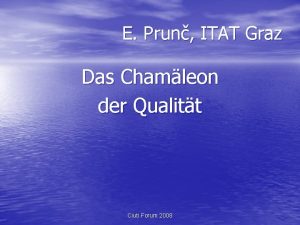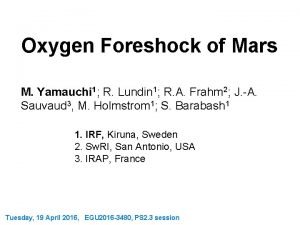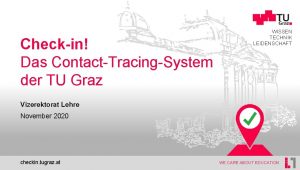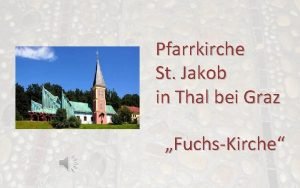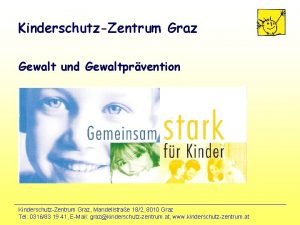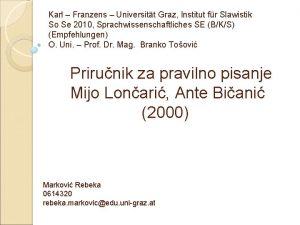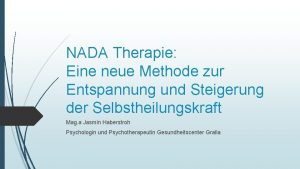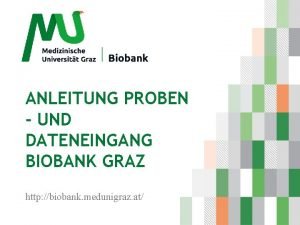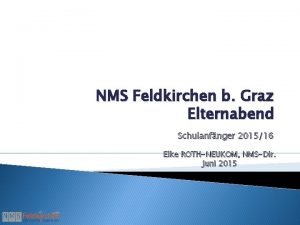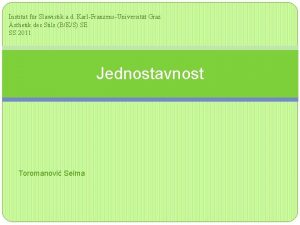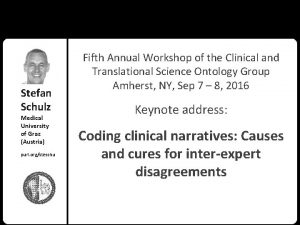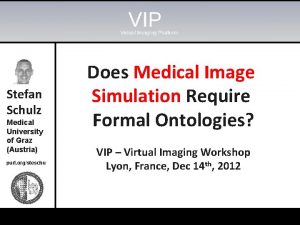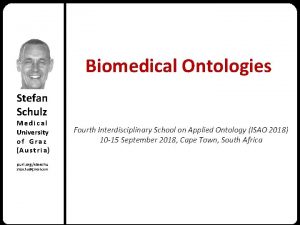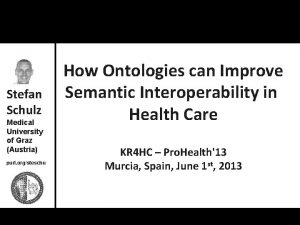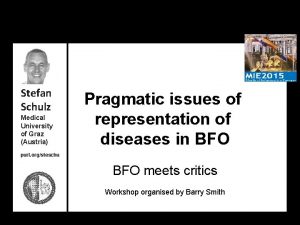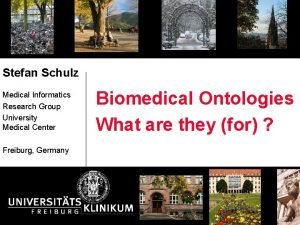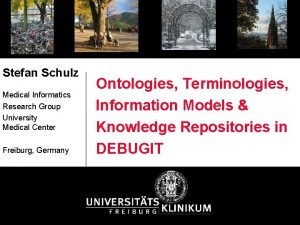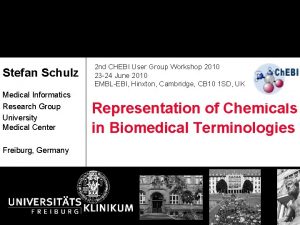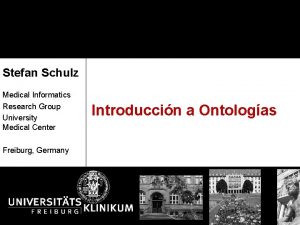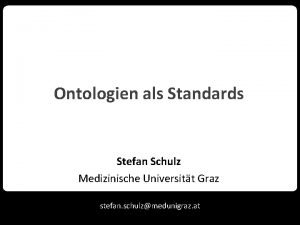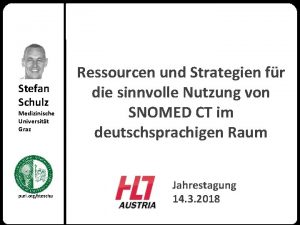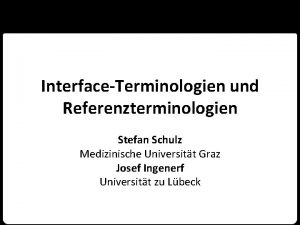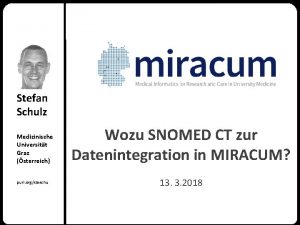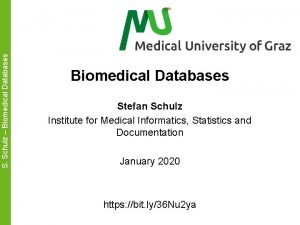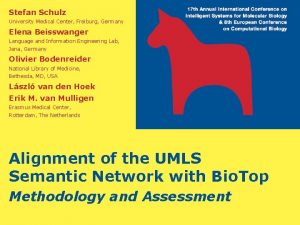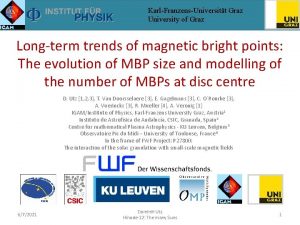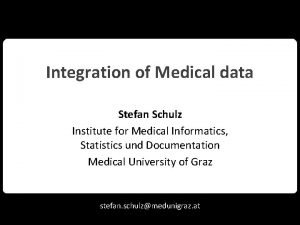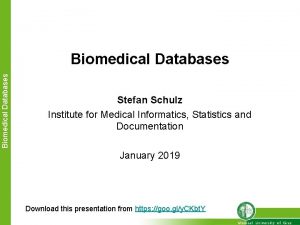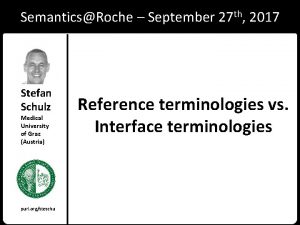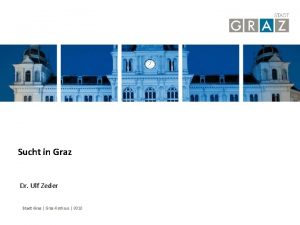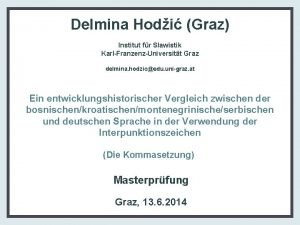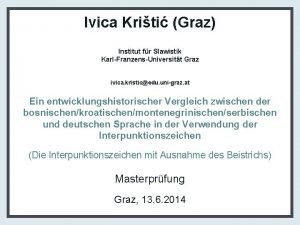Keynote address Stefan Schulz Medical University of Graz

















![Principal quantitative results (English) Concept coverage [95% CI] SNOMED CT Alternative Text annotations – Principal quantitative results (English) Concept coverage [95% CI] SNOMED CT Alternative Text annotations –](https://slidetodoc.com/presentation_image_h/2043901b73ee380e850d7857004f4981/image-18.jpg)























- Slides: 41

Keynote address: Stefan Schulz Medical University of Graz (Austria) purl. org/steschu Annotating clinical narratives with SNOMED CT: The thorny way towards interoperability of clinical routine data

"Classical" AI workflow Data Acquisition D Representation Reasoning Output

"Classical" AI workflow Data Acquisition D Reasoning A Output A Reasoning B Output B Representation

"Classical" AI workflow Data Acquisition Representation A Reasoning Output A Representation B Reasoning Output B D

"Classical" AI workflow Data Acquisition A DA Representation Reasoning Output A Data Acquisition B DB Representation Reasoning Output B

Data reliability Data interoperability high Data Acquisition A DA DA=DB DA DB Data Acquisition B DB DA DB low

Data reliability Data interoperability unstructured representation Interpretation A high DA Contrary to popular belief, Lorem Ipsum is not simply random text. It has roots in a piece of classical Latin literature from 45 BC, making it over 2000 years old. Richard Mc. Clintock, a Latin professor at Hampden-Sydney College in Virginia, looked up one of the more DA=DB DA DB Interpretation B DB DA DB low

Focus of the talk § Structured extracts from unstructured clinical data: reliability and interoperability § Empirical study on inter-annotator agreement § Analysis of examples for inter-annotator disagreement § Mechanisms to improve agreement • • better data reliability better interoperability better training data better gold standards

Annotating clinical narratives with SNOMED CT

Annotating clinical narratives with SNOMED CT Coding observation map metadata phenomena configurations observed Vocabulary Annotation Contrary to popular belief, Lorem Ipsum is not simply random text. It has roots in a piece of classical Latin literature from 45 BC, making it over 2000 years old. Richard Mc. Clintock, a Latin professor at Hampden-Sydney College in Virginia, looked up one of the more symbolic representation map symbols metadata (configurations) configurations

Annotating clinical narratives with SNOMED CT Huge clinical reference terminology representable as OWL EL (quasi-) ontological definitional and qualifying axioms e. Health standard, maintained by transnational SDO SNOMED CT multiple hierarchies ~300, 000 "concepts" preferred terms and synonyms in several languages covers disorders, procedures, body parts, substances, devices, organisms, qualities…

Annotation: Sources of complexity Contrary to popular belief, Lorem Ipsum is not simply random text. It has roots in a piece of classical Latin literature from 45 BC, making it over 2000 years old. Richard Mc. Clintock, a Latin professor at Hampden-Sydney College in Virginia, looked up one of the more Clinical narrative - sequence of Tokens - syntactic structures - relations at various levels • • Compactness Agrammaticality Short forms Implicit contexts best text span to annotate? Naïve or analytic annotation? Map SNOMED CT Ontology - entities, codes - relations - logical constructors - axioms Terminology - preferred terms - synonyms - definitions • Ill-defined concepts • Similar concepts • Pre-coordination vs. postcoordination Complex annotations (> 1 concept) Degree of formality?

Examples Clinical text SNOMED CT concepts (FSNs) 'Duodenal structure (body structure)' "… the duodenum. The mucosa is…" "…Hemorrhagic shock after RTA … " ? ? ? "…travel history of suspected dengue…" 'Mucous membrane structure (body structure)' 'Duodenal mucous membrane structure (body structure)' 'Traffic accident on public road (event)', 'Renal tubular acidosis (disorder)' 'Traffic accident on public road (event)' or 'Renal tubular acidosis (disorder)' 'Suspected dengue (situation)' 'Suspected (qualifier value)' 'Dengue (disorder)'

Coding / Annotation guidelines § Examples: 1. German coding guidelines for ICD and OPS, 171 pages 2. Using SNOMED CT in CDA models: 147 pages 3. CHEMDNER-patents: annotation of chemical entities in patent corpus: annotation manual 30 pages 4. CRAFT Concept Annotation guidelines: 47 pages 5. Gene Ontology Annotation conventions: 7 pages § Complex rule sets, requiring intensive training 1. 2. 3. 4. 5. http: //www. dkgev. de/media/file/21502. Deutsche_Kodierrichtlinien_Version_2016. pdf http: //www. snomed. org/resource/249 http: //www. biocreative. org/media/store/files/2015/cemp_patent_guidelines_v 1. pdf http: //bionlp-corpora. sourceforge. net/CRAFT/guidelines/CRAFT_concept_annotation_guidelines. pdf http: //geneontology. org/page/go-annotation-conventions

Annotation experiments in ASSESS-CT

Annotation experiments in ASSESS-CT § EU project on the fitness of purpose of SNOMED CT as a core reference terminology for the EU: www. assess-ct. eu Feb 2015 – Jul 2016 § Scrutinising clinical, technical, financial, and organisational aspects of reference terminology introduction § Summary of results: brochure published, scientific papers to appear http: //assess-ct. eu/fileadmin/assess_ct/final_brochure/assessct_final_brochure. pdf

Annotation of clinical narratives § Comparing § § § SNOMED CT vs. UMLS derived terminology Resources § § § Parallel corpus: 60 clinical text snippets from 6 languages, high diversity For each language: 2 annotators * 40 samples 20 snippets annotated twice Annotators § § trained by webinars follow annotation guideline (10 pages) • e. g. • chunking into noun phrases • annotation of chunks by sets of codes • give preference to maximally pre-coordinated codes • understanding text and assign maximally specific codes
![Principal quantitative results English Concept coverage 95 CI SNOMED CT Alternative Text annotations Principal quantitative results (English) Concept coverage [95% CI] SNOMED CT Alternative Text annotations –](https://slidetodoc.com/presentation_image_h/2043901b73ee380e850d7857004f4981/image-18.jpg)
Principal quantitative results (English) Concept coverage [95% CI] SNOMED CT Alternative Text annotations – English . 86 [. 82 -. 88] . 88 [. 86 -. 91] Term coverage [95% CI] SNOMED CT. 68 [. 64; . 70] Alternative. 73 [. 69; . 76] Text annotations – English Inter annotator agreement Krippendorff's Alpha [95% CI] SNOMED CT Alternative Text annotations . 37 [. 33 -. 41] . 36 [. 32 -. 40] Krippendorff, Klaus (2013). Content analysis: An introduction to its methodology, 3 rd edition. Thousand Oaks, CA: Sage.

Agreement map: text annotations (English) SNOMED CT UMLS SUBSET green: agreement – yellow: only annotated by one coder – red: disagreement

Systematic error analysis § Creation of gold standard for SNOMED CT § 20 English text samples annotated twice 208 NPs § Analysis of English SNOMED CT annotations by two additional terminology experts § Consensus finding, according to pre-established annotation guidelines § Inspection, analysis and classification of text annotation disagreements § Presentation of some disagreement cases for SNOMED CT

Reasons for disagreement

Human issues § Lack of domain knowledge / carelessness Tokens Annotator #1 Annotator #2 "IV" 'Structure of abductor 'Abducens hallucis muscle (body nerve structure)' (body structure) ' Gold standard 'Abducens nerve structure (body structure)' § Retrieval error (synonym not recognised) Tokens Annotator #1 "Glibenclamide" 'Glyburide (substance)' Annotator #2 – Gold standard 'Glyburide (substance)' § Non-compliance with annotation rules

Ontology issues (I) § Polysemy ("dot categories")* Tokens Annotator #1 Annotator #2 Gold standard 'Lymphoma" 'Malignant lymphoma (disorder)' 'Malignant lymphoma category (morphologic abnormality)' 'Malignant lymphoma (disorder)' *Alexandra Arapinis, Laure Vieu: A plea for complex categories in ontologies. Applied Ontology 10(3 -4): 285 -296 (2015)

Ontology issues (I) § Polysemy ("dot categories")* Tokens Annotator #1 Annotator #2 Gold standard 'Lymphoma" 'Malignant lymphoma (disorder)' 'Malignant lymphoma category (morphologic abnormality)' 'Malignant lymphoma (disorder)' § "Pseudo-polysemy" § Incomplete definitions Tokens Annotator #1 Annotator #2 Gold standard "Former 'In the past (qualifier value)' Smoker" 'Smoker (finding)' 'History of (contextual qualifier) (qualifier value)' 'Ex-smoker (finding)' 'Smoker (finding)' *Alexandra Arapinis, Laure Vieu: A plea for complex categories in ontologies. Applied Ontology 10(3 -4): 285 -296 (2015)

Ontological issues (II) § Incomplete definitions Tokens Annotator #1 Annotator #2 "Motor: 'Skeletal muscle structure (body structure)' 'Muscle finding (finding)' 'Normal (qualifier value)' normal bulk and tone" Gold standard 'Skeletal muscle normal (finding)'

Ontological issues (II) § Normal findings, incomplete definitions Tokens Annotator #1 Annotator #2 "Motor: 'Skeletal muscle structure (body structure)' 'Muscle finding (finding)' 'Normal (qualifier value)' normal bulk and tone" Gold standard 'Skeletal muscle normal (finding)' § Fuzziness of qualifiers Tokens Annotator #1 Annotator #2 Gold standard 'Significant "Significant (qualifier value)' 'Severe (severity modifier) (qualifier value)' 'Moderate (severity modifier) (qualifier value)' bleeding" 'Bleeding (finding)'

Interface term (synonym) issues Tokens Annotator #1 "Blood 'Blood (substance)' 'Extravasation extravasati (morphologic on" abnormality)' Annotator #2 Gold standard 'Hemorrhage (morphologic abnormality)' "extravasation of blood"

Interface term (synonym) issues Tokens Annotator #1 "Blood 'Blood (substance)' 'Extravasation extravasati (morphologic on" abnormality)' Annotator #2 Gold standard 'Hemorrhage (morphologic abnormality)' "extravasation of blood" Tokens Annotator #1 "anxious" 'Anxiety (finding)' Annotator #2 Gold standard 'Worried (finding)' 'Anxiety (finding)' "anxious cognitions"

Language issues § Ellipsis / anaphora § "Cold and wind are provoking factors. " (provoking factors for angina) § "These ailments have substantially increased since October 2013" (weakness) § "No surface irregularities" (breast) § "Significant bleeding" (intestinal bleeding) § Ambiguity of short forms § "IV" (intravenous? Fourth intracranial nerve? ) § Co-ordination: § "normal factors 5, 9, 10, and 11" § Scope of negation § "no tremor, rigidity or bradykinesia" • Addressed by annotation guideline • Manageable by human annotators • Known challenges for NLP systems

Prevention and remediation of annotation disagreements

Prevention: annotation processes § Training with continuous feedback § Early detection of inter annotator disagreement triggers guideline enforcement / guideline revision § Tooling § Optimised concept retrieval (fuzzy, substring, synonyms) § Guideline enforcement by appropriate tools § Postcoordination support (complex syntactic expessions instead of grouping of concepts § Anti-patterns, e. g. avoid unrelated primitive concepts (? )

Prevention: improve terminology structure § Fill gaps § equivalence axioms (reasoning) § Self-explaining labels (FSNs), especially for qualifiers § Scope notes / text definitions where necessary § Manage polysemy § Flag navigational and modifier concepts § Strengthen ontological foundations § Upper-level ontology alignment § Clear division between domain entities and information entities § Overhaul problematic subhierarchies, especially qualifiers

Prevention: improve content maintenance § Analysis of real data to support terminology maintenance process § Harvest notorious disagreements between text passages and annotations from clinical datasets § Compare concept frequency and concept co-occurrence between comparable institutions and users to detect imbalances § Stimulate community processes for ontologyguided content evolution: § Crowdsourcing of interface terms by languages, dialects specialties, user groups (separation of interface terminologies from reference terminologies is one of the ASSESS-CT recommendations)

Remediation of annotation disagreements

Remediation of annotation disagreements § Exploit ontological dependencies / implications Concept A 'Mast cell neoplasm (disorder)' Concept B Dependency 'Mast cell neoplasm A subclass. Of (morphologic Associated. Morphology some B abnormality)' 'Isosorbide dinitrate A subclass. Of (product)' (substance)' Has. Active. Ingredient some B 'Palpation (procedure)' 'Palpation - action A subclass. Of Method some B (qualifier value)' 'Blood pressure taking 'Blood pressure A subclass. Of has. Outcome some B (procedure)' (observable entity)' 'Increased size 'Increased (qualifier A subclass. Of is. Bearer. Of some B (finding)' value)' 'Finding of heart rate 'Heart rate (observable A subclass. Of Interprets some B (finding)' entity)'

Experiment § Gold standard expansion: § Step 1: include concepts linked by attributive relations: § A subclass. Of Rel some B § Step 2: include additional first-level taxonomic relations: § A subclass. Of B Language of text sample English Gold standard expansion F measure no expansion 0. 28 expansion step 1 0. 28 expansion step 2 0. 29 § only insignificant improvement § possibly due to missing relations in SNOMED CT, e. g. haemorrhage - blood

Conclusion (I) § Low inter-annotator agreement limits successful use of clinical terminologies / ontologies § for manual annotation scenarios § for benchmarking of NLP-based annotations § for optimised training data for ML § Structured data essential for many intelligent systems, but unreliable information extracted from clinical narratives raises patient safety issues when used for decision support

Conclusion (II) § Prevention of disagreements § Education, tooling, guideline support § Terminology content improvement: labelling, scope notes, ontological clarity, full definitions, community processes § High coverage interface terminologies § Remediation of disagreements § So far no clear evidence of ontology-based resolution of agreement issues § Big data approaches ?

Conclusion (III) § R & D required: § "Learning systems" for improvement terminology content / structure / tooling. Clinical "big data" underused resource § Harmonization of annotation guideline creation and validation efforts § Formulate and enforce good quality criteria for clinical terminologies used as annotation vocabularies § Better ontological underpinning of clinical terminologies § Ontologically founded patterns for recurring clinical documentation tasks: Information extraction rather than concept mapping* *Martínez-Costa C et al. Semantic enrichment of clinical models towards semantic interoperability. JAMIA 2015 May; 22(3): 565 -76

Thanks for your attention § Slides will be accessible via at purl. org/steschu § Acknowledgements: ASSESS CT team: Jose Antonio Miñarro-Giménez, Catalina Martínez. Costa, Daniel Karlsson, Kirstine Rosenbeck Gøeg, Kornél Markó, Benny Van Bruwaene, Ronald Cornet, Marie-Christine Jaulent, Päivi Hämäläinen, Heike Dewenter, Reza Fathollah Nejad, Sylvia Thun, Veli Stroetmann, Dipak Kalra § Contact: stefan. schulz@medunigraz. at

§ Vibhu Agarwal, Tanya Podchiyska, Juan M. Banda, Veena Goel, Tiffany I. Leung, Evan P. Minty, Timothy E. Sweeney, Elsie Gyang, Nigam H. Shah: Learning statistical models of phenotypes using noisy labeled training data. JAMIA 23(6): 11661173 (2016)
 Profiles of the gifted and talented
Profiles of the gifted and talented Keynote-059
Keynote-059 Keynote-010
Keynote-010 U god keynote speaker zip
U god keynote speaker zip Keynote-524
Keynote-524 Keynote-010
Keynote-010 10 disadvantages of powerpoint
10 disadvantages of powerpoint Keynote assessment
Keynote assessment Logical memory is broken into
Logical memory is broken into Monte schulz
Monte schulz Kelly m schulz
Kelly m schulz Antonietta portulano
Antonietta portulano Carlo schulz
Carlo schulz Emma schulz
Emma schulz Traueranzeige sven schulz greifswald
Traueranzeige sven schulz greifswald Valerie schulz
Valerie schulz Schulz sozien
Schulz sozien 4 seiten einer nachricht
4 seiten einer nachricht Model komunikacije
Model komunikacije Einseitige empfangsgewohnheiten schulz von thun
Einseitige empfangsgewohnheiten schulz von thun Wolfgang schulz döbling
Wolfgang schulz döbling Bruno schulz art
Bruno schulz art Yogi distribution
Yogi distribution Yogi schulz
Yogi schulz Miguel e schulz
Miguel e schulz Zender boodschap ontvanger
Zender boodschap ontvanger Sokrates web graz
Sokrates web graz Cw schule graz
Cw schule graz Sandra hummel uni graz
Sandra hummel uni graz Interkulturelle kommunikation graz
Interkulturelle kommunikation graz Yamauchi graz
Yamauchi graz Fit2work steiermark
Fit2work steiermark Tugraz checkin
Tugraz checkin Ernst fuchs kirche
Ernst fuchs kirche Kinderschutzzentrum
Kinderschutzzentrum Slawistik graz
Slawistik graz Dreihackengasse gymnasium graz
Dreihackengasse gymnasium graz Nada therapie
Nada therapie Fahrzeugbeschriftung kosten
Fahrzeugbeschriftung kosten Biobank graz
Biobank graz Nms feldkirchen klassen
Nms feldkirchen klassen Razgovorni stil primjer
Razgovorni stil primjer
